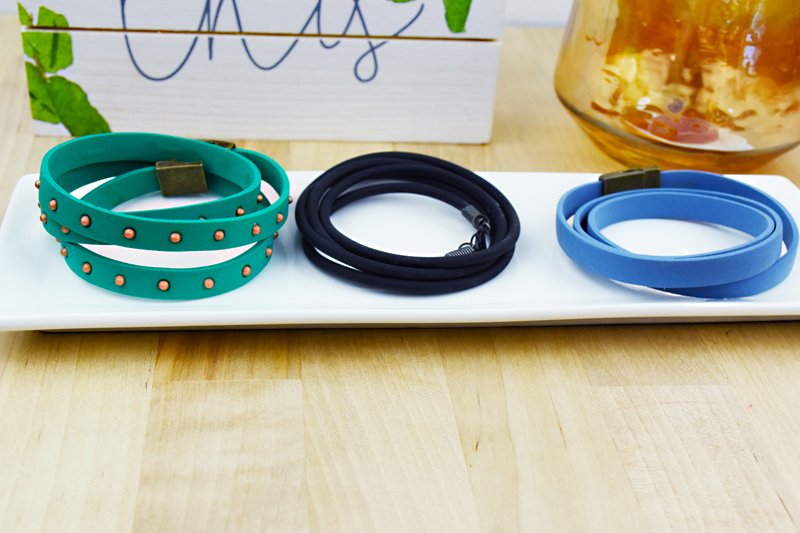Sculpey Soufflé™ Quick Faux Leather Wrap Stackable Bracelets
Sculpey Soufflé™ Quick Faux Leather Wrap Stackable Bracelets
Sculpey Souffle™ clay is such a durable and flexible clay (in thinner layers) that I extrude it to create these quick and easy bracelets. I’ve worn one of these cool little guys for over a year and that means in the shower and the pool! NOTE: I've used Souffle Bluestone and Jade for these bracelets, but you can use ANY Souffle color or mix you wish! The cool thing about Souffle is that if you run it through the pasta machine, it looks like cured leather. If you extrude it, the clay takes on a suede look and feel. Either way in just a couple of wearings, the clay will start to take on a natural smoothness like leather (and or suede). My friends still swore my bracelets were leather until I quickly showed them that they were waterproof!
- Magnetic clasps (Konmay on Amazon)
- Instant glue
- Round dye to fit your coiled wire finding (2), small clasp.
- Empty soda can

- Getting Started:
Start with clean hands, unwrap and knead clay until soft and smooth, or condition by running clay though a Pasta Machine. We recommend using a designated machine for clay purposes only. When working with multiple colors, clean hands with soap and water or baby wipes (we have found that baby wipes work best) before switching colors. Shape clay, pressing pieces firmly together. Wash hands after use.
- Baking:








